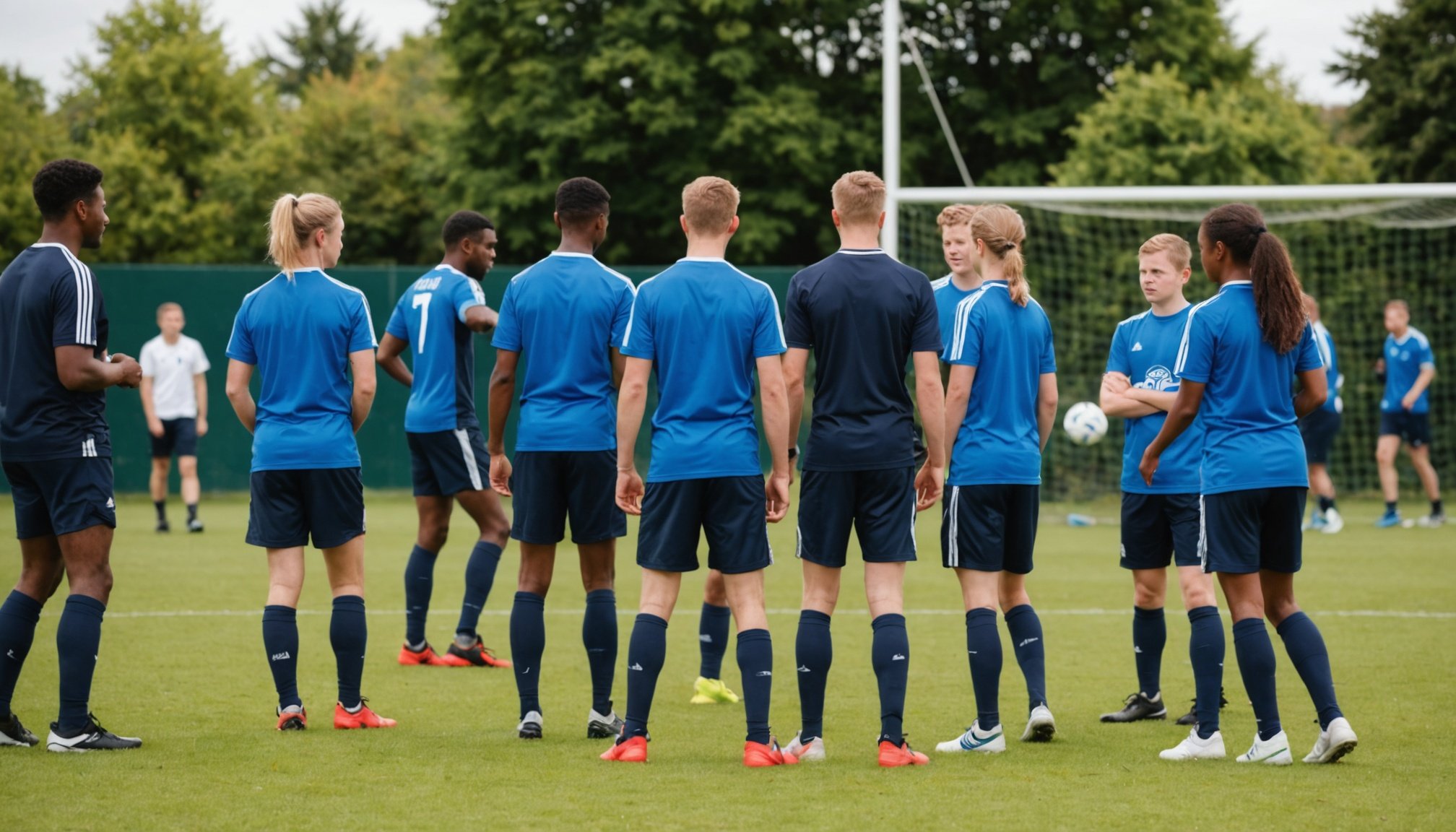Understanding Underserved Communities
Understanding underserved communities is crucial for effective community engagement and support. These communities in the UK often face challenges due to limited access to resources, services, or economic opportunities. Their characteristics can vary widely, but they typically include groups marked by racial or ethnic minority status, low-income levels, and geographic isolation.
By conducting a thorough demographic analysis, we can better understand the diverse makeup of these communities. This involves analysing factors such as age, ethnicity, education, and income levels. Such insights are vital for developing targeted outreach strategies that resonate with specific community needs. Without this understanding, efforts to engage and support these communities may fall short.
Also read : Top Strategies for UK Athletes to Conquer Stress and Anxiety Effectively
Social and economic factors play a pivotal role in shaping the needs of underserved communities. Economic downturns, for example, disproportionately impact these groups, exacerbating existing inequalities. Similarly, cuts to public services can widen the gap in access to essential resources. This underlines the importance of considering both social and economic dynamics in any analysis.
For outreach initiatives to be successful, they must be informed by a comprehensive understanding of the demographics and unique challenges of each underserved community. Only then can they truly support and uplift these communities.
Also to see : Enhancing Athlete Injury Prevention: Innovative Strategies for UK Sports Therapists to Incorporate Yoga
Analyzing Barriers to Engagement
Engaging in sports provides numerous benefits, yet barriers to sports participation exist, particularly for underserved communities. Access issues often arise due to limited facilities, insufficient funding, and lack of local programs. Often, public sports venues may not accommodate everyone because of poor maintenance or inadequate equipment. Such hurdles can discourage participation, especially among children and young people.
Community challenges further exacerbate the situation. In areas where socioeconomic status is lower, families may prioritise basic needs over sports activities. Equipment costs and entry fees present financial strains, preventing equitable access for all. Transportation difficulties also pose significant barriers, limiting attendance and continued engagement.
Several case studies shed light on these challenges while also illustrating potential solutions. For example, in some urban areas, partnerships between local governments and non-profits have led to the refurbishment of community centres, making them more inviting and accessible. These initiatives often incorporate programs that are tailor-made to fit the specific needs of the community.
Addressing these barriers involves considering both the physical and socio-economic dimensions. By advancing policies that offer subsidies or grants, and promoting inclusive community-driven initiatives, it becomes possible to overcome these challenges and enhance overall sports accessibility for everyone.
Effective Outreach Strategies
In community engagement, effective outreach strategies play a pivotal role. Tailored communication, building trust, and creating accessible programs are critical components for success.
Tailored Communication
Understanding cultural nuances is fundamental in crafting effective messaging. Recognising cultural values and beliefs ensures that communication resonates with your audience. Employing local languages and engaging community leaders can significantly enhance your outreach efforts. This approach builds authenticity and fosters trust. Comparing digital and traditional methods reveals distinct engagement strategies: digital methods offer broader reach and immediacy, while traditional methods provide personal, tangible connections.
Building Trust with Community Leaders
Collaboration with local organizations is essential for establishing credibility. By working alongside community influencers, you ensure initiatives reflect the community’s voice and values. Transparency in planning and execution demonstrates accountability, reinforcing trust. Establishing long-term relationships with community leaders promotes mutual respect and understanding, proving beneficial for sustainable community efforts.
Creating Accessible Programs
Inclusive programs require thoughtful design to meet community needs. Considering accessibility, provide affordable and varied participation options. Transportation solutions and leveraging local facilities can greatly enhance program reach. Resources must be efficiently utilised to cater to a diverse audience, ensuring no one is left behind. By focusing on these elements, programs can effectively engage and benefit wider communities.
Partnership Development Opportunities
Creating robust community partnerships enhances the fabric of any sports club. At its core, identifying potential partners is crucial for impactful networking and fostering strong collaborative initiatives. Begin by mapping out local organisations, businesses, and other sports entities that align with your club’s values and missions.
The benefits of inter-organizational collaborations cannot be overstated. Such partnerships allow clubs to pool resources, access new audiences, and create shared success stories. They offer invaluable opportunities for clubs to learn from one another, implement best practices, and innovate.
Consider how these collaborations can particularly uplift underserved communities. For instance, partnering with local schools can introduce sports programs that provide youth with valuable life skills. Aligning with healthcare organisations might promote sport as a part of a healthy lifestyle, further enriching community welfare.
Examples of successful partnerships are abundant. A collaborative initiative between a community sports club and a local charity could lead to inclusive events that bridge divides and promote unity. Establishing these partnerships requires a strategic approach, emphasising mutual benefits and long-term visions.
Ultimately, these efforts cultivate a supportive ecosystem that champions the role of sports as a community unifier and growth catalyst.
Case Studies of Success
Numerous UK sports clubs have shown outstanding commitment to engaging underserved communities, creating impactful initiatives that serve as exemplary models. These success stories underscore the importance of strategic planning and dedication.
One notable example is a local football club that targeted engagement with youth in economically disadvantaged areas. This club initiated free training sessions coupled with mentorship programmes. Concentrating on areas often overlooked by traditional sporting avenues, they leveraged community centres and local parks, making the initiative accessible. Key to their success was collaborating with community leaders and schools, effectively promoting the programme and building trust.
Analysis of such impactful initiatives reveals several best practices. Firstly, tailoring activities to meet the specific needs of the community is crucial. Secondly, maintaining open communication channels ensures continued community involvement and support.
The long-term impact of these efforts is evident. Feedback indicates a reduction in local youth delinquency rates and an increase in school attendance and performance. Furthermore, the clubs reported stronger community relationships and enhanced local support, reinforcing the notion that sports can drive positive societal change when conducted thoughtfully and strategically. These examples provide a roadmap for others aiming to replicate or learn from such successes.
Resources and Tools for Implementation
Engaging with community resources is crucial for sports clubs seeking to enhance their offerings and impact. Identifying funding opportunities and enrolling in training programs can provide the support necessary for growth and development.
Funding and Grants
Sports clubs can explore a variety of funding sources to bolster their initiatives. From government grants to private donations, understanding where to seek funding is vital. Guidelines are available to assist clubs in applying for community support grants, which can make a significant difference. Staying informed about existing government initiatives and funding strategies ensures that clubs can strategically align their proposals to meet required criteria.
Training and Development
Investing in training programs for staff and volunteers promotes effective management and sustainability. It’s important to adopt best practices in cultural competency and engage in sensitivity training to foster an inclusive environment. Resources abound for ongoing education and professional development, ensuring sports clubs remain adept at navigating changing environments and community needs.
Evaluation and Impact Measurement
Measuring the success of community initiatives ensures that resources are both used effectively and deliver maximum benefit. Utilize tools and methods for tracking engagement and outcomes, adapting strategies based on thorough feedback and data analysis. This approach encourages continual improvement and enduring positive impact.











